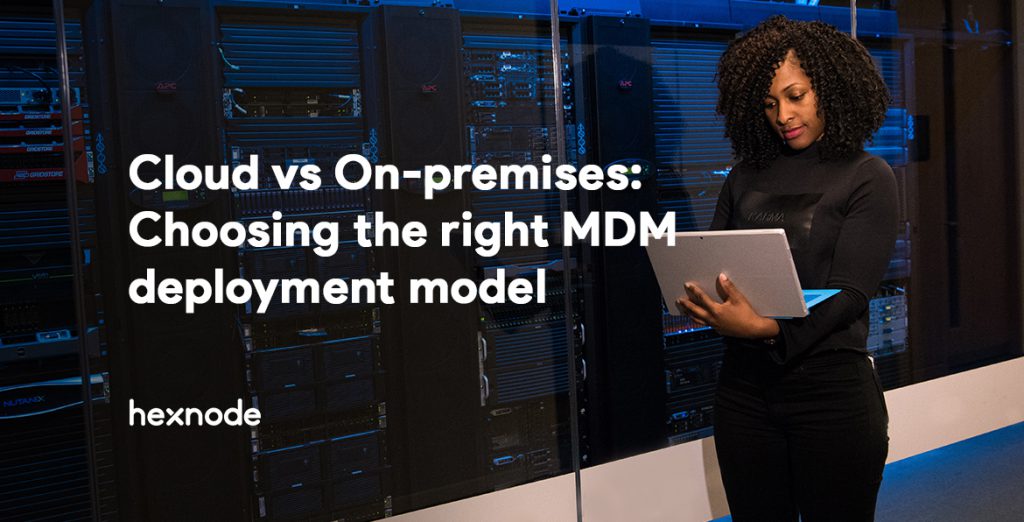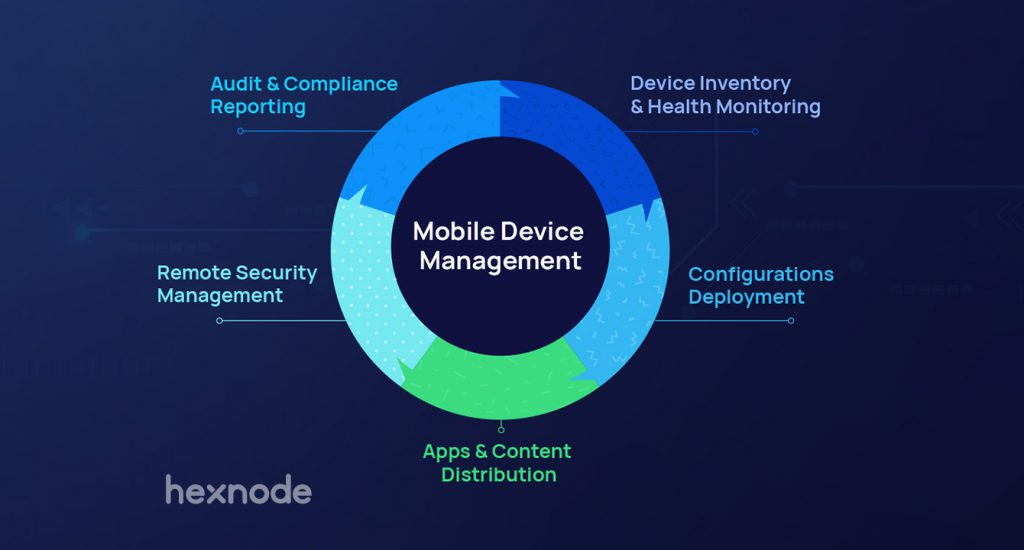Many enterprises feel torn between Cloud and On-premises solutions for Mobile Device Management (MDM). While setting up the IT infrastructure for your enterprise, you will be left with the basic question “Should I stick with on-premises solutions or migrate to the cloud?”. The reality is that there is no one size that fits all model which is best for your enterprise. In fact, only you can decide based on the nature and requirements of your enterprise but this rundown on the various features of each deployment model should make it easier.
Now, let’s take a glimpse of various MDM deployment options available.
On-premises MDM – Still hanging on!
Imagine you have the supreme authority to manage and maintain all ongoing activities in your enterprise without any third-party interference. Sounds cool, right? On-premises deployment model is the key here. In this model, the MDM server is installed within the company’s own servers and computers. The company is in complete charge of its data, software and hardware with no third-party access. The server must be managed, maintained and backed up by the company separately.
Cloud-based MDM – Winner of the decade!
Have you ever wished to switch off the server room and leave the management to a third-party without compromising the security of your company? If yes, then worry no more! Cloud-based MDM deployment enables you to access your server hosted by your MDM vendor through the internet. With a cloud MDM solution, you can enjoy agility, robust security and flexibility of a subscription-based service.
On-premises or Cloud – It’s up to You!
Now that you have familiarized with the basic deployment options available, let’s compare these options across the following set of competencies.
- Cost – Cloud software is generally charged under a monthly or annual subscription plan and has relatively lower initial set up, running and maintenance costs. In the case of an on-prem server, you must deal with the setting up and installation of hardware and software which requires large capital investments. In addition to that, you are solely responsible for all the costs and risks involved in implementation, maintenance, repair, updates and other hidden expenses.
- Complexity – Based on the flexibility and ease of use of services provided, cloud solutions will ultimately win the race. Cloud services can be quickly implemented in your enterprise providing flexible solutions through cloud operations. It’s an exponential reduction in cost and time as compared to that of an on-prem server. An on-prem server, on the other hand, requires heavy IT involvement and longer timeframes.
- Security – In an on-premises edition, the data security completely resides within the organization. You are given the supreme authority to customize, control and secure data so that the entire system data remains in-house. This is important for many enterprises who do not wish to take their sensitive data out of their organizations. The data security in cloud deployments is transferred to a third-party cloud service vendor providing superior security and sophistication. Here the data security is under the hands of the cloud vendor.
- Ease of deployment – Cloud services can be quickly deployed in enterprises since no onsite installation of software and hardware is required. The deployment using cloud-based model generally requires less IT involvement and technical skills. In contrast to cloud solutions, on-premises deployments require longer deployment timeframe for implementation, customization and updates.
- Reliability – A cloud model requires an active internet connection for workers to be more productive either remotely or onsite. On-premises solutions are not reliant on internet connectivity and is extremely useful for organizations with large number of users accessing the same set of data.
- Scalability – When a situation arises where you want to expand the storage or seats in your enterprise, cloud deployment models provide quick and hassle-free solutions as compared to their on-premises counterparts.
Now let’s have a recap on these details so that you can choose what is best for your enterprise.
The cloud MDM model will be the best option available for your enterprise if:
- You want to cut down initial capital investments.
- You prefer quick deployment of services.
- You are not planning to burden yourself with the data security of your enterprise alone.
- You want to transfer all your concerns about backup, updates, maintenance, etc., to a third-party MDM vendor.
- You need to use these MDM services at multiple locations.
- Flexibility and mobility of services is all what you need.
- You prefer a consistent monthly or annual subscription plan.
- You plan to expand your storage or seats at a later stage.
You can go for on-premises MDM if:
- You do not wish to share your sensitive corporate data out of your enterprise because of stringent security regulations.
- You are capable of performing various operations such as maintenance, repair, updates, etc., all by yourself or with your dedicated IT personnel.
- Your enterprise is located at a single location only.
- You don’t wish to store your data in the cloud because of your company’s strict regulations and policies.
With the above details in mind, you are now prepared to choose between the two deployment options suitable for your organization. Each option has its own ups and downs and it’s up to you to decide the best option based on the needs and requirements of your organization. Enterprise Mobility solutions such as Hexnode with its comprehensive feature set and state-of-art technology provides extensive support for both cloud and on-premises editions. Check it out yourself by signing up a free trial in Hexnode for a period of 14 days here.





